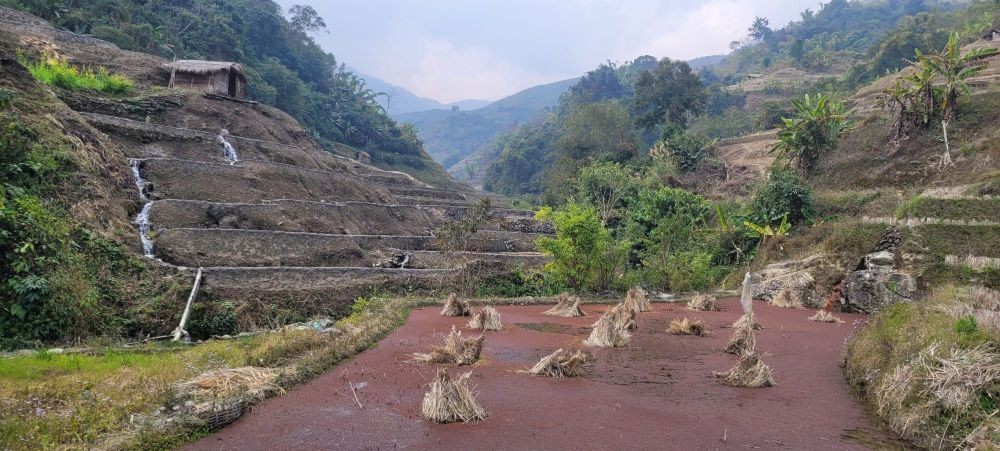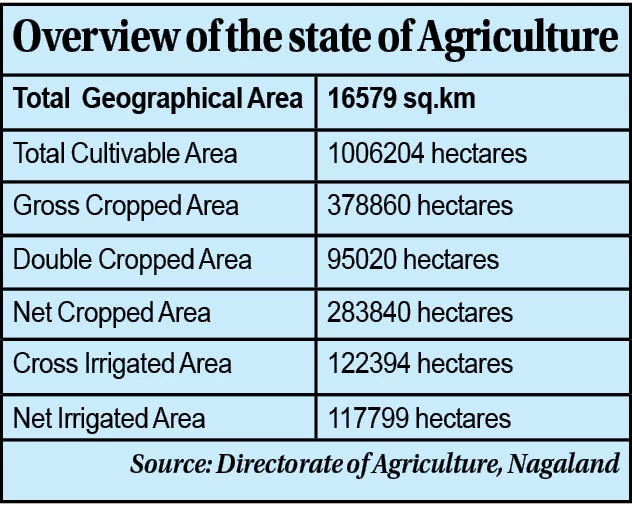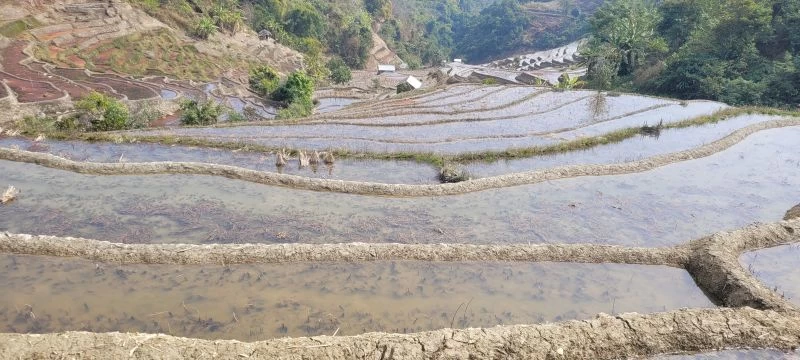A view of paddy field in Phek district. (Morung Photo)

Our Correspondent
Kohima | March 6
There has been a substantial progress in the production and productivity of agriculture crops due to the interventions of the State Plan and centrally funded flagship programmes of Government of India.
This was stated in the Nagaland Economic Survey 2023-2024 presented in the recently concluded 4th session of the 14th Nagaland Legislative Assembly in Kohima. The Survey was done by Directorate of Economics & Statistics, Government of Nagaland.
The report stated that the overall cultivated area, production and yield of cereals, pulses, oilseeds and commercial crops increased significantly in 2022-23 as compared to 2021-22, which is further expected to increase in 2023-24.
During 2022-23, the total area increased by 54%, from 245710 hectares in 2021-22 to 378870 hectares. Correspondingly, there is an increase in the total production by 83% from 630170 MT in 2021-22 to 1157520 MT in 2022-23. During 2023-24, the total production is anticipated to increase to 1190330 MT.

The report stated that agriculture continues to be the mainstay of Nagaland's economy, with more than 60% of the population engaged in agricultural activities.
Over the years, there has been a significant progress in terms of production and productivity of food grains. Agriculture department has the mandate to increase the overall growth of agriculture in the state.
To boost the production and productivity of Agri & Allied crops, the use of fertilizers and pesticides as inputs has become essential, the report stated.

During 2022-23, the total quantity of fertilizers consumed in the state stood at 1569 MT with 759 MT of Nitrogen, 569 MT of Phosphate and 241 MT of Potassium.
Owing to the advocacy of organic farming in the state, the use of fertilizer is anticipated to decrease to 1514.30 MT in 2023-24.
The use of pesticides is also on the decline. It is expected that in 2023-24, the use of pesticide will decrease to 7.83 MT of solid pesticides and to 10319 litres of liquid pesticides.






